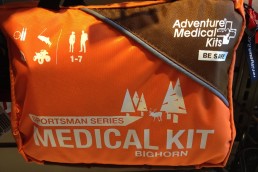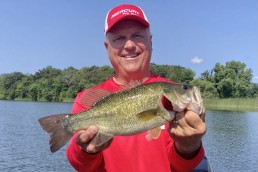Medical Kits for Sportsmen: Reasons for carrying first aid in the field
SHARE THIS POST
I recently attended a seminar at an outdoor press association conference and listened to Kevin Michalowski, a longtime firearms writer from Wisconsin, talk about concealed carry. Michalowski started by saying, “Before we talk on concealed carry, I want to ask you a question: How many of you keep a first-aid kit with you while hunting, fishing or whatever it is that you do in the outdoors?”
The room was full of folks and only a handful raised their hands—it was mostly silence.
“Why not?” Michalowski blurted, “You’re in the field far away from any emergency care and handling guns, knives, hooks, and who knows what else.”
I got the message quickly, and he was exactly right. I couldn’t believe that I hadn’t thought of carrying some type of medical kit into the field with me. As a matter of fact, I didn’t even have one in any of my vehicles.
So I decided immediately that when I got back home from the conference all that would change.
I am going to ask you the same question: Do you carry any kind of medical or first-aid kit with you while hunting, fishing, hiking or whatever you do to enjoy the great outdoors? And, if you don’t, are you willing to make a change?
Here are only a few good reasons why outdoorsmen and women should carry a first aid kit:
- Skinning or filet knives can accidentally cut a person if not handled correctly
- Fishing hooks can cause nasty wounds that are not easily treated
- Many insects bite or sting
- Slips and falls can happen, resulting in sprained ankles, cuts, or abrasions
- Campfires, heaters, or boiling pots can cause accidental burns
- Briars and thorns can puncture the skin
- May never happen, but there’s the possibility of a gunshot wound
- Sunburn, frostbite, blisters, poison ivy, spiders, snakes, heat exhaustion, hypothermia, etc.
If you’re headed outdoors, you should carry some type of first-aid kit, and many stores sell prepackaged kits in a variety to accommodate both men and women. If you don’t like prepackaged kits, a DIY kit can easily be put together.
Are you enjoying this post?
You can be among the first to get the latest info on where to go, what to use and how to use it!
Here are the basics for any first-aid kit for the outdoors:
- Adhesive bandages, a variety of sizes and fabric is preferred
- Butterfly bandages
- Sterile non-woven sponge
- Non-stick sterile pads
- Sterile gauze strips
- Medical adhesive tape
- Insect sting and bite relief
- Antihistamine for allergic reactions
- Antibacterial ointment
- Ibuprofen
- Antiseptic wipes
- Tweezers
- Safety pins
- Nitrile gloves
- Moleskin or blister treatment
- First-aid manual or info cards
You can add to your basic medical kit and customize it to suit your needs. Multiple kits can also be carried or at least stored in a vehicle.
There are other options to keep with first-aid kits like a trauma pack, emergency hook remover, quick-clot sponges, cooling towels, syringes and eye drops. Whether your kit is prepackaged or DIY, add things to it that will be useful for you and others with you while afield. It’s always a good idea to toss in some hard candy or peppermint too, as this can help in treating a drop in someone’s blood sugar levels if they’re a diabetic.
I personally went with a “Backpacker” first-aid kit from Bass Pro Shops. I added a “Trauma Pak“ with QuikClot made by Adventure Medical Kits. I also added a personal survival kit made by Coleman that comes in a small 2-1/2-by-4-1/2-inch tin box. I stuffed a pair of reading glasses in my kit as well.
I toted the Backpacker kit in my turkey vest all turkey season and left the other two in my truck. After turkey season ended, I put the kit in my truck, so it’s always near no matter where I go. The next item on my list to purchase is a tactical tourniquet.
Maybe you’ll never need most of the items in a first-aid kit, but I’ve already dipped into mine and have used some of the adhesive bandages and antibiotic ointment thanks to a barbed-wire fence. But even if you don’t need it, you may run into someone on the road traveling who may need the help, or perhaps even a fellow sportsman in our great outdoors.
MWO
SHARE THIS POST
Did you enjoy this post?
You can be among the first to get the latest info on where to go, what to use and how to use it!
Andy Douglas
Andy Douglas is an avid hunter, outdoor writer, and photographer. He has been chasing whitetails, big toms, bass, and most game that can be had for over 35 years. He lives the outdoor lifestyle and is passionate about sharing with others through stories and photos. Email him at AndyDouglas.Outdoors@yahoo.com



